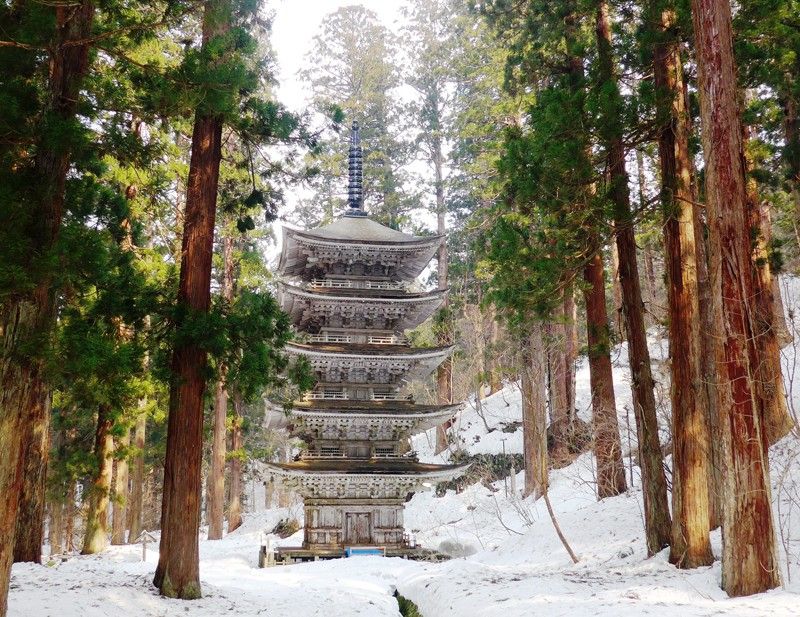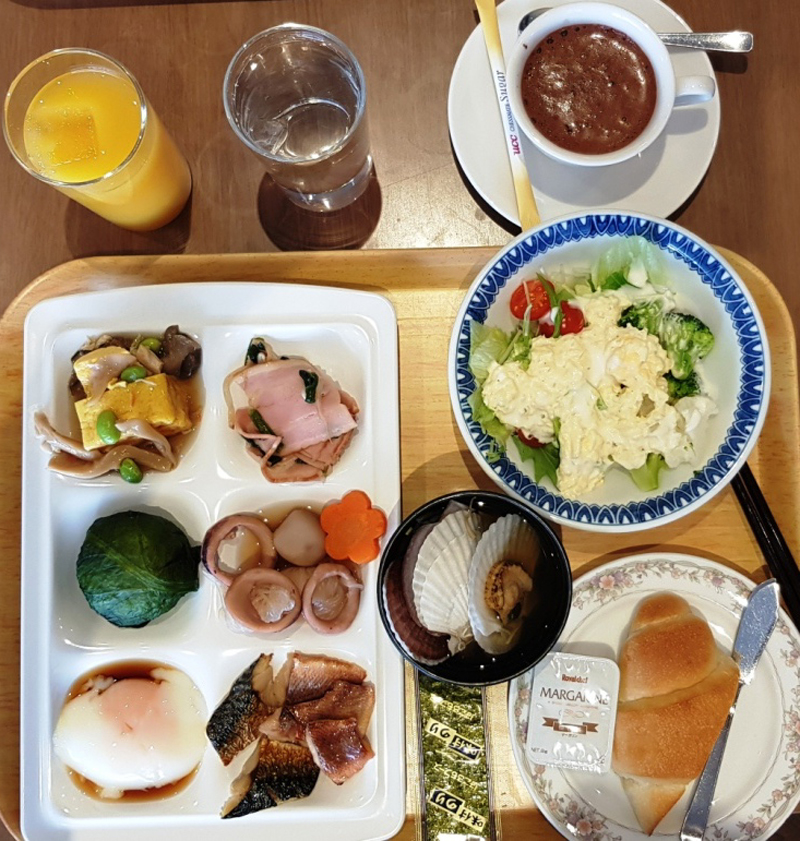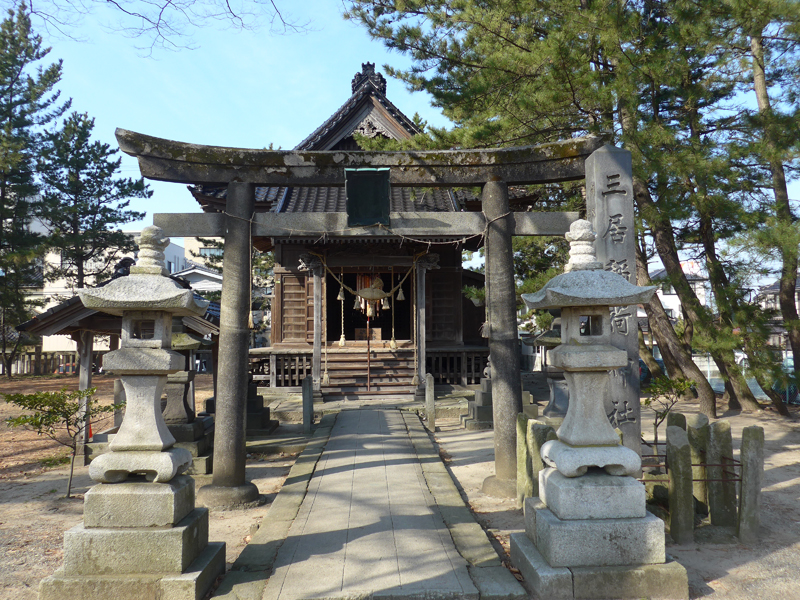Exploring Yamagata

Japan’s Tohoku region is located at the northeast end of Honshu and consists of six relatively unexplored prefectures. The Tohoku region is only three hours away from Tokyo via train and it is said to have some of the heaviest (and finest) snow fall in Japan. The Tohoku region is also the birthplace of the popular kokeshi dolls, simple wooden dolls with no arms or legs that have been crafted for more than 150 years as a toy for children.
Prior to our discovery of Yamagata, our guide, Yumiko Kobayashi, told me that I would enjoy the prefecture because of the food. The scenery started to change since there was heavier snow fall in Yamagata.
Our first stop in the city was for lunch. Yumiko suggested we try this little restaurant that served authentic Neapolitan pizza. So, we stopped at Ischia, one of the few restaurants in Japan serving authentic Neapolitan pizza, accredited by the True Neapolitan Pizza Association. Chef Shoji Kenji is one of those accredited chefs who whips up this pizza, which, I swear, could have come straight out of an oven in Napoli. If non-Japanese food tasted that good there, I could have imagined what was in store for us.
We then headed to Tsuruoka City, recognized globally for its gastronomy and was awarded the honor of being a UNESCO Designated Creative City of Gastronomy — the only one in Japan and one of 26 in the world. Tsuruoka was given the award because it maintains three characteristics highly valued by UNESCO: the abundance of heirloom crops, food and local dishes that are seasonal, and festivals and food that are full of history. This city boasts approximately 60 indigenous (also known as heirloom) crops, thanks to the preservation and innovative techniques of local farmers. There are also festivals and age-old specialty dishes such as dadachamame, rice, sake, Dewa Sanzan shojin ryori, Yamagata beef and Shonai pork.
Dadachamame is similar to edamame and is an heirloom bean that is particularly sweet and has a deep umami flavor. Dadacha means “father” in the local dialect, and mame is “bean” in Japanese, so it literally translates to “father bean” and has two beans in each pod. Its survival is in great part thanks to the cleverness and social skills of Shonai women, who grew the beans in the ditches.

A healthy Japanese breakfast.
Dewa Sanzan (the three mountains of Dewa) has a long history as an important pilgrimage destination. Its Buddhist vegetarian fare has been served for centuries, featuring mostly mountain vegetables gathered around the Dewa Sanzan.
Shojin ryori is the traditional dining style of Buddhist monks in Japan, and grew widespread in popularity with the spread of Zen Buddhism in the 13th century. As the cuisine is made without meat, fish or other animal products, it can be enjoyed by vegans, vegetarians and meat-eaters alike. People who know me know I am not fond of vegetables but this meal I had in Saikan (both a temple and a restaurant) could actually turn me into a vegetarian!
A typical shojin ryori meal consists of soybean-based food like tofu along with seasonal vegetables and wild mountain plants. This simple meal contributed to Japan’s elegant haute cuisine we now know as kaiseki. Even without meat, fish or strong flavors, Japanese Buddhist cuisine is far from bland. The monks use the “rule of five” when cooking so that every meal offers five colors (green, yellow, red, black and white) as well as five flavors (sweet, sour, salty, bitter and umami), which are drawn out naturally from the ingredients rather than added via other flavorings.
I met Zsanett Laszlo, a Hungarian living in Tsuruoka who loves Japan and is an international gastronomy promoter in Tsuruoka. She told me to try Shonai Zaikko where I had a kaiseki dinner that was simply amazing. Shonai Zaikko owner and chef Kazutaka Saito runs the restaurant with his sons Shota and Ryoichi Saito who trained in Madrid and Bilbao, Spain, respectively. Everything was fresh, simple and fantastic. I also got to try the famous Shonai pork, which was extremely tender and soft due to its heavy marbling of fat yet it did not taste fatty at all. Zsanett said there were so many tiny restaurants all around Tsuruoka that were all good.
We also went to a pickling factory where I learned that different vegetables could be pickled in vinegar, mustard, miso, or sake lees (a byproduct of sake making). Also an area of interest in the Suiden Terrasse, a hotel built by Japanese Pritzker prize winner Shigeru Ban. During rice planting season, the hotel seems to be floating on rice paddies.
Those who love marine life should visit the Tsuruoka City Kamo Aquarium, which has one of the largest jellyfish displays in the world. It was a fun experience for a couple of hours! Another must-do activity (aside from eating) is climbing Mount Haguro, one of three sacred peaks in Dewa Sanzan. Ascetics have come here on pilgrimages for centuries. One will walk through an ancient cedar forest, which conceals an over 600-year-old, five-story wooden pagoda in a small grove. The 29-meter-high pagoda is unpainted, showing off the beauty of the wood used to build it.

Sankyo Inari Shrine.
Shonai’s access to pure water sources from the Dewa Sanzan and Mount Chokai, combined with its rice production and skilled craftsmen, means the area is home to almost half of Yamagata Prefecture’s approximately 50 sake breweries that brew their award-winning sake. Wine seems to be growing in popularity. Takahata Winery was established in Yamagata in 1990 and has been increasing its production of wine to be exported around Japan and other parts of the world.
Since rice is important in the region, we also visited the Sankyo-Soko Rice Storehouse. Constructed in 1893, it was composed of 12 storehouses used for storing rice, and nine of the storehouses are still in use today. The rest have been renovated into the Shonai Rice Museum, which presents information about Shonai rice including the history of rice cultivation. Here, I bought some rice to take home…I had to!
It was my final lunch in Yamagata and I had yet to try its famous beef. Yumiko took me to a restaurant where I finally tried a special type of beef from Yamagata called Yonezawa beef, a Wagyu (Japanese beef) originating in the Yonezawa region of Yamagata Prefecture. It is considered one of the generally recognized three most famous beef brands in Japan, along with Kobe beef and Matsusaka beef. It is also one of the most perfectly balanced in terms of fat to meat ratio. I totally loved it and devoured my bowl in minutes.
Three days in the Yamagata Prefecture were not enough. I could not get enough of its beauty, the warmth of its people, the new flavors of food to be discovered there. Another visit to this hidden gem should be planned again soon.
(Follow me on Instagram @pepperteehankee.)
- Latest




























